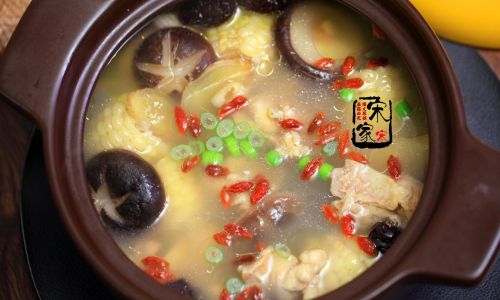Table of content
Cooking chicken soup is a timeless culinary art that transcends cultural boundaries. From Asian households to European kitchens, this hearty dish is cherished for its warmth, comfort, and myriad health benefits. While the process may seem straightforward, achieving a balance between nutrition and flavor requires attention to detail and a few key techniques. This guide will walk you through the steps to make a chicken soup that is not only nutritious but also delightfully delicious.

Understanding the Basics
Before diving into the recipe, it’s crucial to understand the foundational elements of a good chicken soup. Quality ingredients, proper cooking methods, and a touch of patience are essential. Chicken soup’s appeal lies in its simplicity, yet each component plays a vital role in enhancing its overall taste and nutritional profile.

Ingredients:
- Chicken: Preferably free-range or organic for better flavor and nutritional value.
- Vegetables: Carrots, celery, onions, and garlic form the classic mirepoix, adding depth and sweetness.
- Aromatics: Bay leaves, thyme, black peppercorns, and parsley for fragrance and subtle seasoning.
- Broth: Homemade chicken broth is ideal, but high-quality store-bought options can be used.
- Seasonings: Salt, pepper, and herbs to taste.
Step-by-Step Guide to Making Nutritious and Delicious Chicken Soup
Step 1: Preparing the Chicken
- Selection: Choose a whole chicken or chicken parts (breast, thighs, or wings) that suit your preference for meatiness and flavor.
- Cleaning: Rinse the chicken thoroughly under cold running water to remove any impurities. Pat it dry with paper towels to avoid diluting the broth.
- Seasoning: Season the chicken generously with salt and pepper. You can also rub it with a mixture of olive oil, garlic, and herbs for extra flavor.
Step 2: Making the Broth
- Roasting the Chicken (Optional but Recommended): For a richer, more flavorful broth, roast the seasoned chicken in an oven preheated to 400°F (200°C) for about 30-40 minutes, or until the skin is golden brown. This caramelization adds layers of complexity to the soup.
- Simmering: Place the roasted (or raw) chicken in a large stockpot. Add chopped carrots, celery, onions, garlic, bay leaves, thyme sprigs, and a few black peppercorns. Fill the pot with cold water, ensuring it covers all the ingredients by at least 2 inches.
- Bring to a Boil: Place the pot on the stove over high heat and bring the contents to a rolling boil. Skim off any foam or impurities that rise to the surface.
- Reduce Heat: Once boiling, reduce the heat to low and let the soup simmer gently, uncovered, for at least 2-3 hours. If using raw chicken, it should be fully cooked through (internal temperature of 165°F or 75°C).
Step 3: Extracting Flavor and Nutrients
- Removing Chicken: Carefully remove the cooked chicken from the pot and set it aside to cool slightly. Strain the broth through a fine-mesh sieve into another clean pot, discarding the vegetables and aromatics.
- Shredding Chicken: Once the chicken is cool enough to handle, shred or chop the meat into bite-sized pieces. Reserve the bones and any leftover skin and fat for making a richer second broth, if desired.
Step 4: Finalizing the Soup
- Returning Chicken to Broth: Add the shredded chicken back into the strained broth. Taste the broth and adjust the seasoning with salt and pepper as needed.
- Adding Vegetables (Optional): For a more substantial soup, you can add additional cooked vegetables like potatoes, peas, or corn. Cook these in the broth until tender.
- Herbs and Finishing Touches: Stir in freshly chopped parsley or cilantro for a burst of freshness. A squeeze of lemon juice can also brighten the flavors.
Step 5: Serving and Enjoying
- Ladle into Bowls: Serve the hot chicken soup in bowls, garnished with additional herbs, a drizzle of olive oil, or a sprinkle of cheese if you like.
- Accompaniments: Pair your soup with crusty bread, a side salad, or a simple green vegetable to make it a complete meal.
Nutritional Benefits and Tips
Chicken soup is a nutrient-dense dish packed with essential vitamins, minerals, and proteins. The long, slow cooking process breaks down the chicken bones and connective tissues, releasing collagen and other nutrients that are beneficial for skin health, joint mobility, and gut health.

- Low-Sodium Option: For those watching their sodium intake, use unsalted chicken broth and adjust seasoning with herbs and lemon juice instead of salt.
- Freezing for Later: Extra soup can be frozen in airtight containers for up to 3 months. Thaw in the refrigerator overnight before reheating.
- Customizing Flavors: Experiment with different herbs and spices like rosemary, sage, or cumin to suit your taste preferences.
Conclusion
Making nutritious and delicious chicken soup is a rewarding culinary endeavor that combines the art of slow cooking with the science of extracting maximum nutritional value from ingredients. By following these steps and tips, you can create a dish that not only nourishes your body but also warms your soul. Chicken soup isn’t just a meal; it’s a timeless comfort that transcends generations, bringing people together through the simple, yet profound, act of sharing a bowl of warmth.







0 comments